![]()
A few years ago, Marla Raucher Osborn discovered her Jewish roots in the western Ukrainian city of Rohatyn.
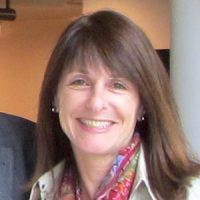
She and her husband have since left their home in California and relocated to Lviv, in western Ukraine, where they run an NGO called Rohatyn Jewish Heritage. This NGO, or non-government organization, is dedicated to restoring Rohatyn’s centuries-old Jewish heritage which was almost completely obliterated by the Nazis during the Holocaust.
It’s a daunting project. Of Rohatyn’s Jewish community which numbered in the tens of thousands before WWII, only a few remain today. Remnants of synagogues, cemeteries, and other visible symbols of this once thriving and vibrant community lie scattered across the area, buried in asphalt and concrete foundations, in forests and fields.
Marla has dedicated her life to finding and restoring as many of these remnants as she can. Recently, she kindly agreed to share her story with Nash Holos listeners.
Pawlina: So how did you end up starting this whole Rohatyn adventure? You and your husband do this, and this is kind of your life’s work now. How did you get started? What brought you to Rohatyn?
Marla: It’s a good question. I like to say I was an accidental activist, because I didn’t go looking for it, it grabbed me. My Rohatyn grandmother, my father’s mother was a very influential person in my life, and she passed away about 15 years ago. In 2008 while living in Paris, my husband said, “You know what? For our anniversary, let’s make a trip to Rohatyn, in fact let’s make our first trip to Ukraine.” And we went. We went to Lviv, we rented a car, we drove in winter—it was February—to Rohatyn. We had no translator with us, no maps, no information where the Jewish sites were, where my grandmother had lived before she left with her parents and sister in 1914. And two hours later I couldn’t wait to leave. By the time we got back to Paris I thought I had it, I’ve made that heritage trip, I never want to go back. But over the next couple of years the more I thought about it, and the more involved I got with a Rohatyn Jewish descendants group that was formed on the internet, the more I realized the problem was not Rohatyn, the problem was me. I hadn’t gone prepared. So in 2011 we went back. We brought an interpreter with us, and from that very first visit in 2011, we were introduced to Mykailo Vorobetz. He took us the sites, and he showed us the Jewish headstones he had been accumulating. From there on out… there was no return. That was it.
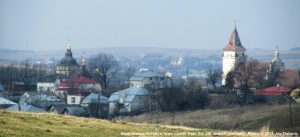
Pawlina: Wow. You were hooked. So… but why? Your husband suggested it, why? Why Rohatyn?
Marla: Well a couple of reasons. Both of us have always been the family historians in our particular families. And it is worth pointing out my husband is not Jewish, but I tell people he is the most Jewish non-Jewish person you would meet. He is absolutely involved with this project 100%. But I was always very intrigued with my grandmother’s family. And I’ve thought about this a lot because… the family had two aunts of my grandmother who had advanced degrees in the inter-war period when Rohatyn was Polish and I always found them very fascinating. They didn’t have any children, they survived the Shoah, the Holocaust, because they left Rohatyn in the 1930’s when there were restrictions starting to be imposed on Jews in certain professions; like doctors and teachers, etc. And I always was very intrigued by this side of my family. In some ways it was in part because there was so little I knew about that side of the family. In a way I think it’s symbolic of what Jewish heritage is like in western Ukraine, because it is very much about empty spaces, and looking for the traces of either family or heritage that may still exist. And for that reason, despite the fact that on my mother’s side of the family which is also from this area but further east and outside of Galicia, I knew a lot about her family but was less interested in that. I was far more interested in the Galician side of the family which was western-Ukraine based. It was a challenge for me to find out what I could discover about the family, what remained of the town, what memories still existed with the towns people, the Jewish population that had lived there at one time.
Pawlina: Wow… it’s so interesting that you say it is representative of the Jewish community in Ukraine. Give us the history of Rohatyn’s Jewish community.
Marla: Well we are actually working on a time line right now for the new museum that is going to be opening in Rohatyn, which is a regional museum. There is going to be a component of the permanent exhibit on the other ethnicities that lived in Rohatyn. So Poles, Jews, Germans etc. Actually Jews were granted rights to live in Rohatyn and have professions around the middle of the 17th century. Sometime shortly thereafter they acquired property to build synagogues, a Jewish cemetery, etc. So very much, very typical of western Ukraine and Galician western Ukraine. Jews had been present in Rohatyn for at least 350 years. And it really was only, as you mentioned; a very short period of time that managed to destroy not only the people, the physical lives, but the culture as well. So we are really trying to spend a lot of time on the 350 years that led up to the Holocaust. That Jewish people lived in Rohatyn and shared Rohatyn as a home with Ukrainians, Poles, Germans, etc.
Pawlina: That’s interesting… and it’s kind of a refreshing approach to dealing with this. Because the Holocaust is horrible; people have to know about it—it is important that people know about it. But there is so much more. That is such a negative, sad, tragic thing. We can’t ever forget it, but I think it is important to start rebuilding. I think that’s where we are at now in our society—is let’s start to rebuild and understand the history. And as an amateur historian that is a subject that is close to my heart. There was so much, as you say it goes back to 350 years and a lot happened in those 350 years. How much do you think can be restored?
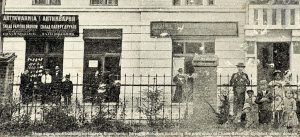
Marla: That is a very good question. I for one, like you, I am interested in bridge building. I’m interested in learning about the Ukrainian story of Rohatyn which is a huge hole in my understanding. I think that unfortunately the years of the Holocaust of course have come to define for many Jews in America, Israel, Australia etc. the entire experience. But it is very important to recognise that families had a continuous presence in these towns for hundreds of years and multiple generations. And at least in the case of my family which I think is quite representative of middle class Jewish Galician families that had been stable for a long time… they saw historical events making daily life difficult, but they did not pick up and leave. They saw that they had families, they had businesses, they had relationships with townspeople. And I know from letters and memoirs and interviews I have done with survivors that the feeling was … okay; we have gone through hard times before and we will weather through this and we’ll come out the other end. So I think it is far more interesting to focus on the fact that Rohatyn was home to these different ethnic groups; Jewish being one third of the population of Rohatyn for a very long time. And to understand what it was about the town, the village and then ultimately the city that prompted them to stay and call it home.
Pawlina: That is interesting and it is very neat to think of that… as a community sticking it out, this is home. And here in Canada it is kind of the same thing. Here in mid 20th century, all of a sudden you have people that come in and completely slaughter a third of this city’s inhabitants. This is actually something I think a lot of people are not aware of… is this is how most of the Holocaust happened, this is the killing fields. Everybody knows about Auschwitz and the death camps and… that… kind of seems to symbolise what the Holocaust was about. But there was so many people that didn’t get on those trains that were murdered wholesale. So this is really something that I think the work that you’re doing is starting to open eyes and make people aware that the scope is much broader than what anyone actually recognised.
Marla: You bring up a very good point which is… generally… and I can only speak as an American Jew, especially a west coast American Jew… and that is there was a sense that the Holocaust was about Auschwitz. It is a very complex topic that continues to evolve, even in the last few years… our understanding of the extent, and efficiency of the Holocaust continues to be revised. This is the land of the Holocaust by bullets. The vast majority of Rohatyn’s Jews, like the vast majority of Jews in western Ukraine and Galicia ended up in mass graves, not deported to death camps. And these graves and the physical culture that they left behind in terms of cemeteries, synagogues, schools, even sports centres…they continue to exist even if the people are not still there. And the fact is, for the last 75 years, those living in the towns—the Ukrainians living in the towns that were once populated by Jews, Poles and others —are the ones who on a day to day basis are living with the physical reminders of the abrupt and horrible ending of those culture in the Holocaust. In many cases they are the ones who have been caring for these sites. That is certainly true in Rohatyn.
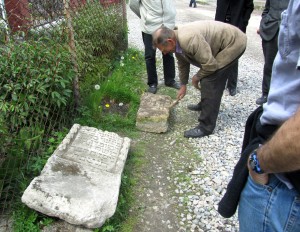
Pawlina: I find that interesting because that was a huge… the destruction the Nazi’s did was so sudden and so… devastating. But it didn’t end with them because… that part of… Ukraine was given over in the Yalta agreement, right?
Marla: Yeah.
Pawlina: So… a complete other story of Ukraine and repatriation. But for the people that stayed, the whole thing kind of carried on. It didn’t… the Soviets were not interested in rebuilding, let’s put it that way.
Marla: No and in many cases in fact, the Soviets continued the destruction of the cultural heritage that existed. It’s not so much the case in Rohatyn, but there are certainly villages and towns all around Rohatyn where even if a cemetery or synagogue did manage to survive the Nazi destruction; the Soviets came in and destroyed it. Or they finished off the destruction that started. So yeah I agree. For Ukrainians it ended up being a double occupation that… absolutely from a Jewish perspective… closed the window on a Jewish presence and a Jewish memory, and froze—even in the educational system—the discussion of those that lived in towns prior to the Soviet and Nazi occupation.
Pawlina: But the villagers … kind of in secret… seemed to… well I don’t know if this is pre-1991, when the Soviet Union collapsed and Ukraine became a sovereign nation; was it that point that the villagers started to dig in and start to preserve what little was left of their Jewish heritage in the village? Or was it before that? During the Soviet times in secret?
Marla: It’s very hard for me to say because the key date of the first post war Jews to go back and visit Rohatyn was 1998, when a handful of survivors from Israel and America with their children, grandchildren, etc. went back to Rohatyn—working with the city of Rohatyn to put up a few monuments and memorials at the two Jewish cemeteries and two mass grave sites, remembering the Jewish community.
Pawlina: Whose initiative was that? Was the city already doing it or was it this group that…
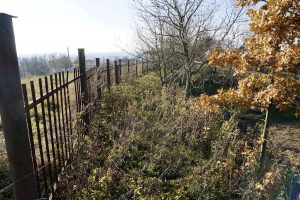
Marla: The city has owned… I don’t know how long they have, but the city has owned the properties that had previously been the Jewish cemeteries and mass grave sites, probably since independence I am assuming. And on the initiative of descendants in Israel and America, they were in contact with the city about memorialising these spaces. There were two Soviet memorials, Soviet-era memorials that were put up at the mass grave sites; but as typical with Soviet memorials, they said nothing about the victims and the graves as being Jewish. They just said victims of fascism. But surely the Rohatyners and the town remember. Many of them remembered because you still had elderly people that were alive then that are not alive today. And those that lived in Rohatyn were certainly aware that the sites had been Jewish cemeteries or mass grave sites, because I can tell you for instance with the mass grave at the south ender site; the villagers on their own initiative have not ploughed. It’s in a very rural part of the town, and they have self-regulated dealing with that property (for lack of a better word). So it has stayed sort of wild because they all know what it was during the war, and out of respect they don’t touch it. So the memory was still there but nothing had actually been professionally or officially… maybe that is the better word; officially… tagged, marked, memorialised. But again, the memory was still there among people in town and it was certainly the case with the city of Rohatyn as well.
Pawlina: You are listening to Nash Holos Ukrainian Roots Radio. We are speaking with Marla Raucher Osborn, founder of the Rohatyn Jewish restoration project, Rohatyn Jewish Heritage.
In the second part of this interview, Marla will tell us about a retired teacher in his 80s who continues to share his knowledge of Rohatyn’s Jewish past, and about the role he plays in her organization. Marla will also share details of various facets of her Rohatyn restoration project, in particular locating headstones from Jewish cemeteries that had been desecrated and vandalized by the Nazis and Soviet authorities and lie hidden, in pieces, throughout the area.
Join us two weeks from now for Part 2 of our interview with Marla Raucher Osborn. Until then, Shalom!
– 30 –
Nash Holos was first introduced to Rohatyn and Marla Raucher Osborn in 2014. The audio and transcripts of those reports are available at the Ukrainian Jewish Encounter website. They are also archived at the Nash Holos website here. Select Ukrainian Jewish Heritage and type Rohatyn in the search bar.
![]()
Listen to part 1:
Listen to part 2 here:


